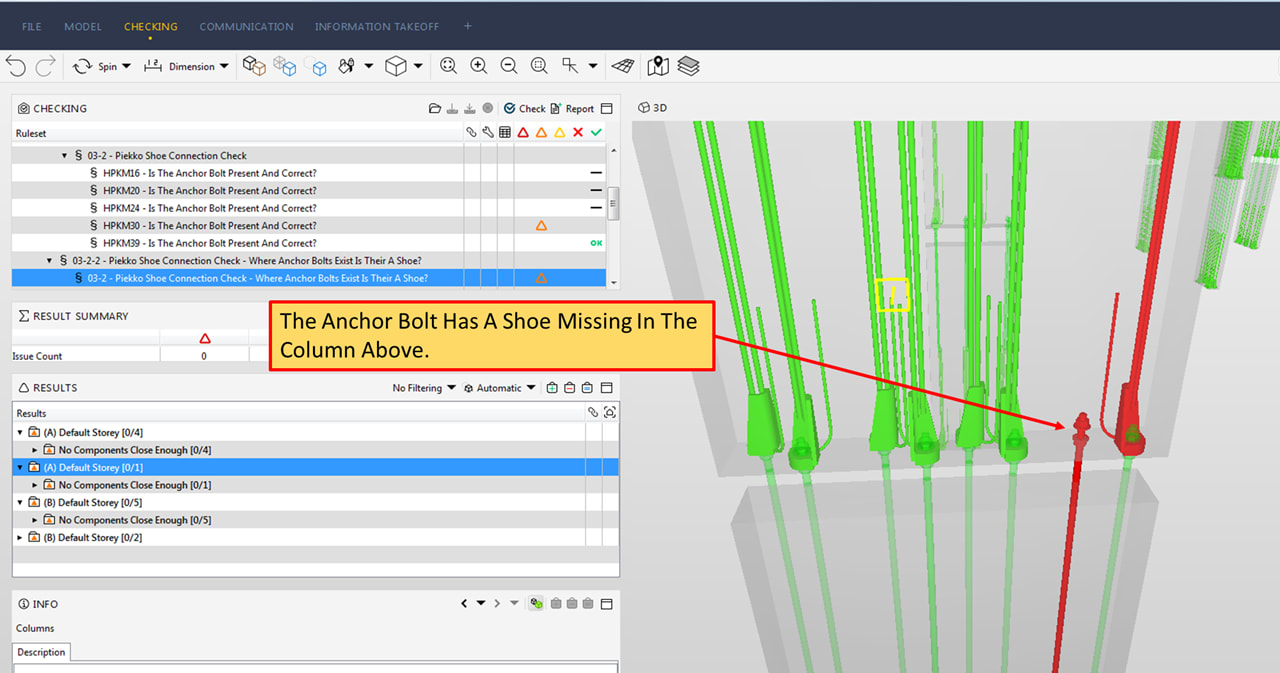Checking the quality of digital information is an essential part of any project at Laing O’Rourke. It begins with initial clash checks, design iteration checks and model revisions, continues by checking the precast concrete products manufactured at Laing O’Rourke’s offsite manufacturing facility, Explore Industrial Park (EIP) in Steetley, Worksop, and concludes with further checks carried out at the project site.

Model checking just gives us that complete reassurance that when the project is actually put together on site, everything works exactly as it should.– Antony Aucote, Laing O’Rourke
One of Laing O’Rourke’s current projects is a hospital in the north of England, where the team is using Solibri software across the project for model checking and clash detection tasks.
Antony Aucote, senior digital engineer at Laing O’Rourke, explains: “It’s not just us as the digital engineers, we have the commercial team, designer consultants and planners using Solibri for everything, from detailed model checking and clash detection to carrying out their weekly project reviews.”
The software is also used to create preparation packs for the operatives on site, including screen shot and sequencing video production.
“The value that we get from Solibri is the efficiency,” adds Robert Broad, senior digital engineer at Laing O’Rourke. “We’re using it for checks that previously would have been quite difficult and labor intensive to do manually.”
With Solibri, Laing O’Rourke has been able to automate a great deal of its model checking, bringing overall time savings and quality into the checking process. Broad continues: “We’re not just using the standard clash detection ruleset, but also most of the advanced geometry rulesets. For example, the component distance check to ensure, say for a cast-in coupling, that the corresponding parts in the other component are within a certain distance.”
Other examples include the alignment checks and measurements to satisfy minimum requirements for factory production, as well as tolerance and access space checks to ensure a safe assembly on site.
There is also the possibility to bring in models from external consultants. “The MEP manufacturer, for example – we can bring in their model and compare it against the precast fabrication model to make sure there are no clashes or other alignment issues,” Broad adds.
The quality assurance process runs in collaboration with all the project stakeholders. “Solibri uses a neutral IFC file format, so we can federate models from multiple platforms, and that’s useful for us because we prefer to select the platform that best suits our precast re-enforcement detailing needs,” says Broad.

Software detects any problems at the early stages of a project
Laing O’Rourke also makes use of the BCF Connector functionality in Solibri. Aucote explains: “Once the team is carrying out the model review, they’re actually publishing any errors or issues that they find straight up to BIMCollab, which is the chosen commenting platform on this project.
“We find that this built-in functionality is bringing the team together really well, because although the design teams are external to Laing O’Rourke, they can view the issues directly, too, and review them more effectively than the traditional process.”
Since there can be many different teams working on multiple elements on each project at the same time, it’s inevitable that clashes will show up. “There has been high level savings by using Solibri early in the process and it has allowed us to rule out faults further down the line,” Aucote concludes.











